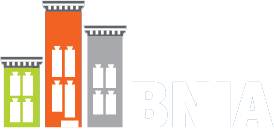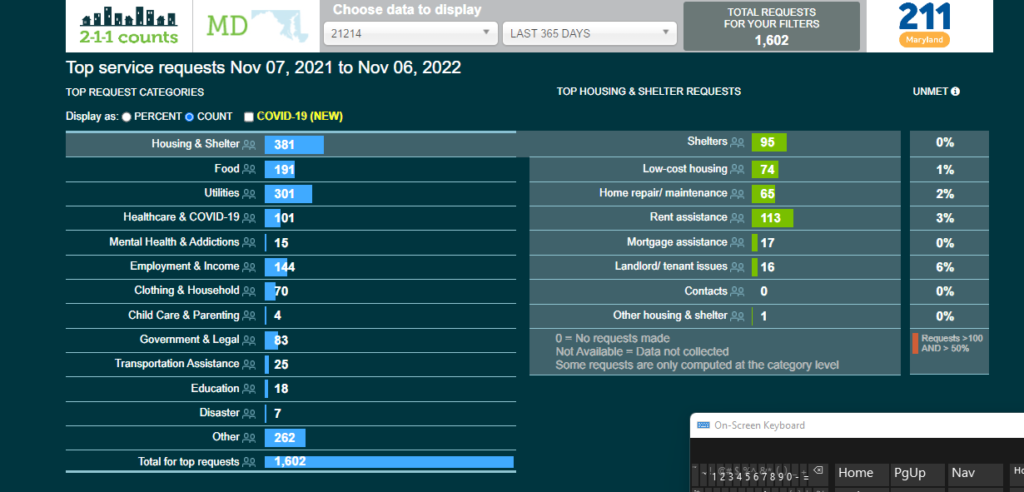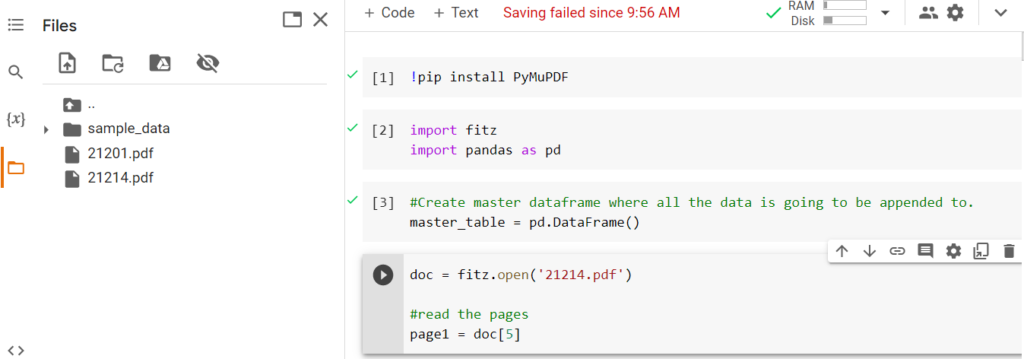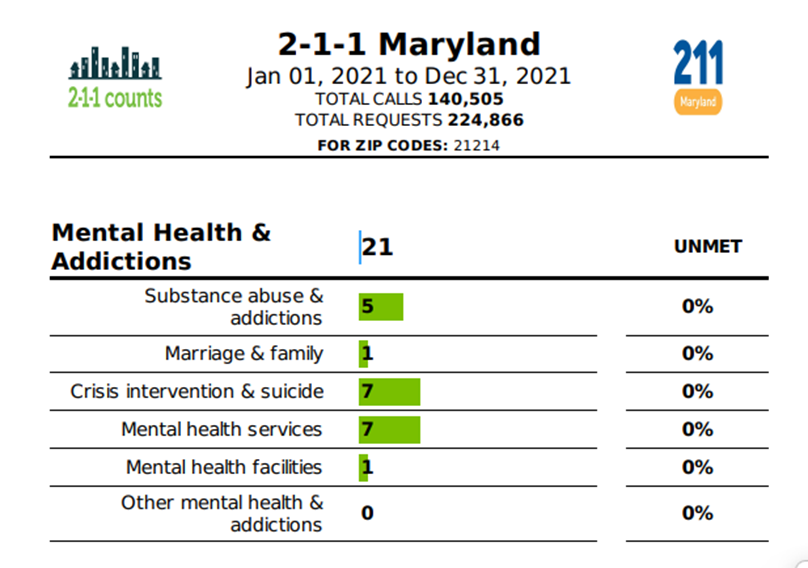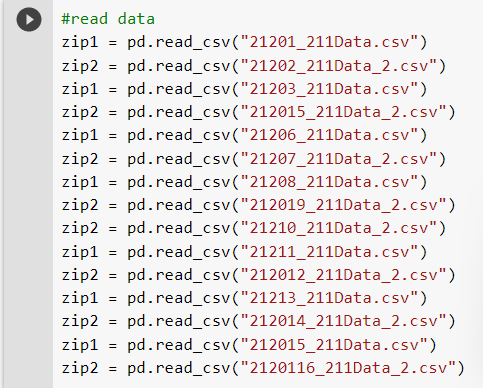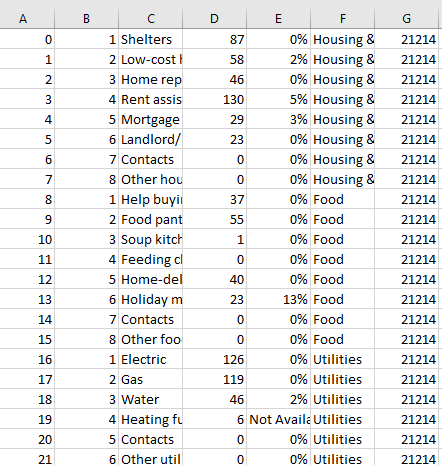By Jaia Russell
Purpose
The purpose of my project is to analyze what people around the city need the most assistance with for the year 2021. Through this observation, I will be able to see what the community needs right after Covid hit. I think the results of this year will be slightly higher than other years because during this year people are getting back into the work field and students going back to school.
Background on 211 Data
“The Federal Communications Commission (FCC) designated 211 as the 3-digit number for information and referrals to social services and other assistance in 2000. The 211 service is provided by more than 200 local organizations that are committed to serving their communities. Many different kinds of organizations operate the 211 service, including United Ways, Goodwill, Community Action Partnerships, and local crisis centers” (Network, n.d.), In 2010, Maryland Information Network, 2-1-1 Maryland Inc. was established as a 501(c)(3) nonprofit. 211 is a local community service that allows people to access information to receive housing, utility, food, employment, or mental/physical health assistance. 211 also coordinates with local, state, and federal agencies during emergencies and disasters. Referral specialist from 211 center receive request from a caller, access resources listed in database, and match callers to any available resources, linking them directly the organization that can help.
Types of Referrals Offered by 211
- Basic Human Needs Resources – including food and clothing banks, shelters, rent assistance, and utility assistance.
- Physical and Mental Health Resources– including health insurance programs, Medicaid and Medicare, maternal health resources, health insurance programs for children, medical information lines, crisis intervention services, support groups, counseling, and drug and alcohol intervention and rehabilitation.
- Work Support – including financial assistance, job training, transportation assistance and education programs.
- Access to Services in Non-English Languages– including language translation and interpretation services to help non-English-speaking people find public resources (Foreign language services vary by location.)
- Support for Older Americans and Persons with Disabilities– including adult day care, community meals, respite care, home health care, transportation and homemaker services.
- Children, Youth and Family Support– including child care, after-school programs, educational programs for low-income families, family resource centers, summer camps and recreation programs, mentoring, tutoring and protective services.
- Suicide Prevention– referral to suicide prevention help organizations. Callers can also dial the following National Suicide Prevention Hotline numbers which are operated by the Substance Abuse and Mental Health Services Administration of the U.S. Department of Health and Human Services
Source
- 211 MD data was collected from https://md-dc.211counts.org
I was assigned to work with 211 Data on homelessness. This data is based on people calling 211 for assistance with food, shelter, and other emergency services. Originally, I was supposed to web scrap from https://md-dc.211counts.org but I discovered that web scrapping was blocked from the 211 websites. When I tried to download the data from the website, I got the 403 forbidden error code. This code indicates that the server is refusing to authorize this activity. Due to this error, I had to download PDFs separately for each zip code instead of just filtering all zip codes that I needed. The 403 error is becoming common for organizations to block web scrapping on their website because of cyber-attacks. This helps cut down on security risk. But I was still able to get the data that I needed so I proceeded with downloading every zip code individually.
(Example of PDF file download) (https://md-dc.211counts.org/, n.d.)
Tools
I used the Colaboratory notebook through Google. Colab lets you write and execute your code using Python through the web browser. I have worked with software like this called Jupyter Notebook in class. Colab is different from Jupyter because Colab is cloud-based meaning you don’t have to download any software; it’s built into the google application. Colab is also better because it runs on a google server and gives access to a free GPU (Graphical Processing Unit). Ultimately, since I’ve had to download Jupyter so my computer, operates off my local machine and uses my system’s RAM (Random Access Memory) storage, so it runs slower than Google’s server.
The Process:
Step One: Extraction
The first step when extracting with python is to import the libraries you will use in your code. First, I installed PyMuPDF which allows me to analyze a PDF file. Then I used the Fitz and Pandas library to complete the extraction of all text I need from the PDF files. After this, I imported each page individually, one zip code at a time.
Step Two: Data Cleaning
I ran into some problems during the extraction process. This problem arose because some of the topics were two lines, confusing the table, and putting the second line in a different row in the table I was trying to make. I came up with a code that merged the words so they will be on one line.
(Example showing Mental Health & Addictions, Substance abuse & addictions, and Other mental health & addictions on separate lines)
Step Three: Creating Table
To finalize the master table, I had to read all excel files that I previously created separately with all the zip codes together. Then, I merged all the excel files so when it was time to make my bar graph, it would be easier to organize.
Conclusion
Below you will see my bar graph that was constructed from my final table in the excel file. I noticed that most of the request were for shelter and rent assistance. Surprisingly, the next top request was tax preparation. Tax preparation was sometimes significantly higher than people who requested shelter and rent assistance. For example, the 21212 zip-code had 248 requests for shelter but 367 request for tax preparation. For the 21208 zip-code, the shelter request was 6,148 with the tax preparation being 9,418. On the 211counts website, I was able to filter all the zip codes so I could see an actual visual on the request. In 2021, the pandemic was coming to an end but the impacts had just started. “Even as the American economy continues its recovery from the devastating impact of the pandemic, millions of American face deep rental debt and fear eviction and the loss of basic housing security. COVID-19 has exacerbated an affordable housing crisis that predated the pandemic and has deep disparities that threaten the strength of an economic recovery that must work for everyone” (Treasury, n.d.)
(https://md-dc.211counts.org/, n.d.)
References
(n.d.). Retrieved from https://md-dc.211counts.org/: https://md-dc.211counts.org/
Affairs, C. a. (2019, Decemeber 31). Retrieved from https://www.fcc.gov: https://www.fcc.gov/consumers/guides/dial-211-essential-community-services
Treasury, U. D. (n.d.). Retrieved from https://home.treasury.gov: https://home.treasury.gov/policy-issues/coronavirus/assistance-for-state-local-and-tribal-governments/emergency-rental-assistance-program
